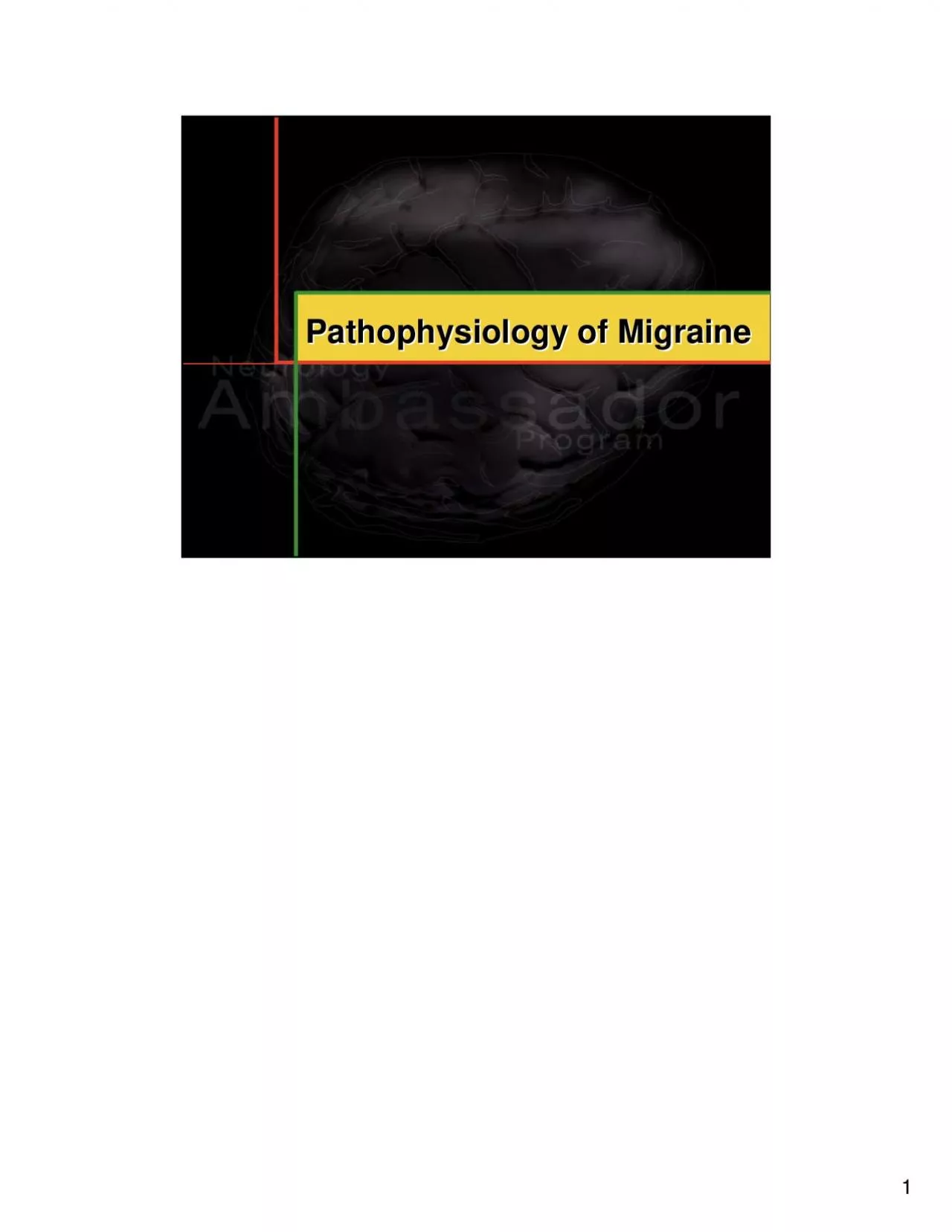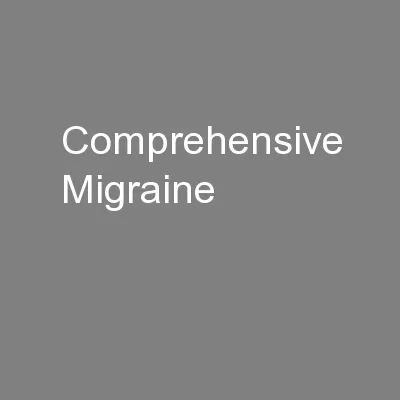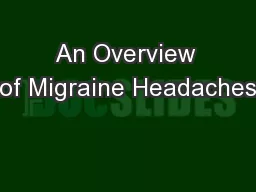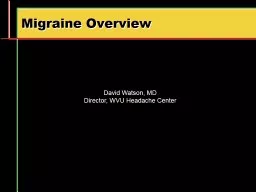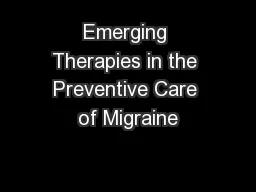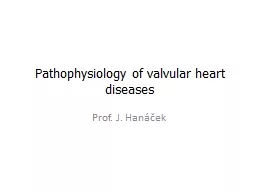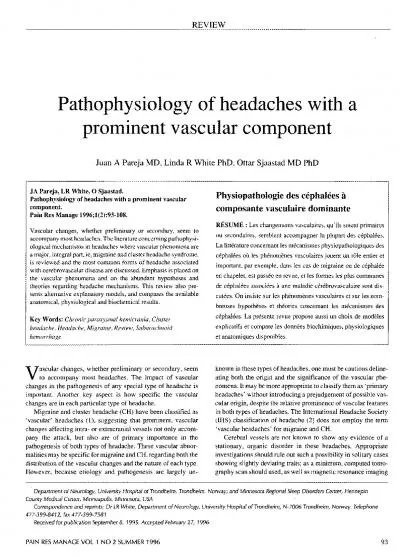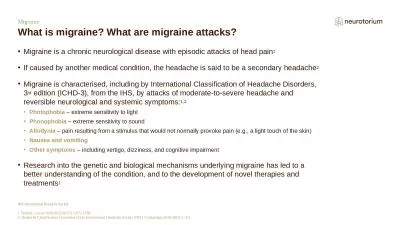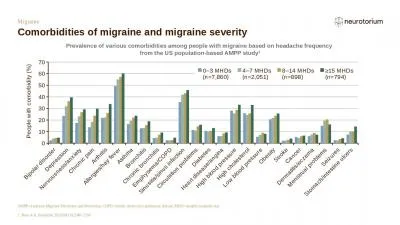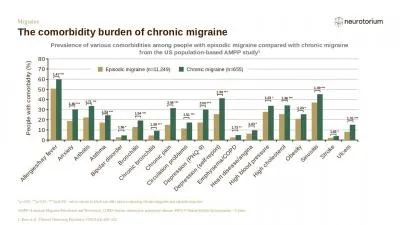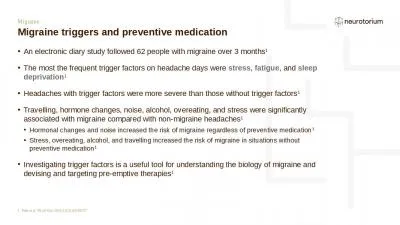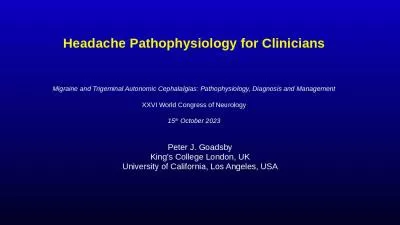PDF-Pathophysiology of MigrainePathophysiology of Migraine
Author : cappi | Published Date : 2022-10-13
1 4 Vulnerability to migraineTriggering migraine Migraine aura The frequency with which migraine attacks occur may vary from once in a lifetime to almost daily an
Presentation Embed Code
Download Presentation
Download Presentation The PPT/PDF document "Pathophysiology of MigrainePathophysiolo..." is the property of its rightful owner. Permission is granted to download and print the materials on this website for personal, non-commercial use only, and to display it on your personal computer provided you do not modify the materials and that you retain all copyright notices contained in the materials. By downloading content from our website, you accept the terms of this agreement.
Pathophysiology of MigrainePathophysiology of Migraine: Transcript
Download Rules Of Document
"Pathophysiology of MigrainePathophysiology of Migraine"The content belongs to its owner. You may download and print it for personal use, without modification, and keep all copyright notices. By downloading, you agree to these terms.
Related Documents

